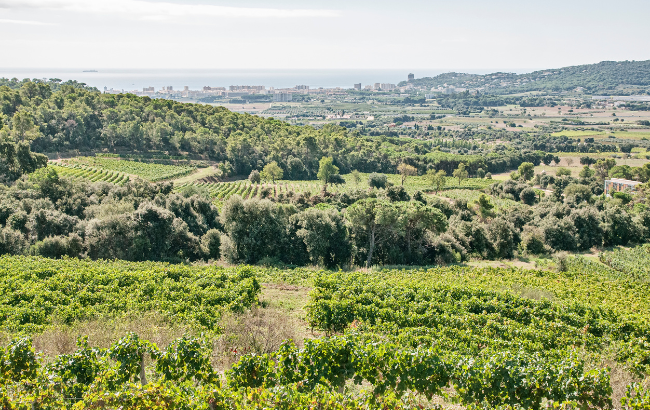This website uses cookies so that we can provide you with the best user experience possible. Cookie information is stored in your browser and performs functions such as recognising you when you return to our website and helping our team to understand which sections of the website you find most interesting and useful.
2013 Primeurs: St Estèphe to Margaux
By Ben KennedyOur first daily report from the en primeur tastings in Bordeaux.
France woke up on Monday morning to the shock of Sunday’s municipal election results: a comprehensive routing of the Socialist Party across the country by the right-wing UMP and serious inroads made by the Front National, forcing the Prime Minister to resign by the end of the day and President Hollande to reshuffle his cabinet. They should have seen it coming.
Many wine buyers set off this morning to taste their first primeurs and, according to much that has been said about the vintage thus far, the writing was clearly on the wall for Bordeaux 2013 too. However the results of this first day have given credibility to the potential of this beleaguered vintage and I have been encouraged by what I have tasted so far. It is a very mixed bag, but there are some good wines among them.
The Monday of primeur week is always a close succession of individual château visits; the group tastings organised by the Union des Grands Cru de Bordeaux only start on the Tuesday. My itinerary started in St Estèphe in the north of the Médoc and I worked my way south to finish up in Margaux by the evening.
It is impossible to generalise about these wines, and buyers will do well to pick carefully. The potential strong points of 2013 would appear to be an elegant and perfumed aromatic profile, harmonious balance, and an overall classic style, while the pitfalls to look out for include a lack of weight on the palate, aggressive tannins and an abrupt finish. Most Cabernet-based wines veer from the usual cassis-led black fruits to red fruits and I have not found any wines of real power and few of great depth in this first day’s tasting. One thing which has struck me today is the fundamental importance of making a second wine in a difficult vintage: there is a greater margin of quality and a more marked stylistic difference between the grand vins and the second wines of many properties in 2013, suggesting in some instances that the lesser wine has effectively been sacrificed for the benefit of the greater one.
Montrose was first up, under a shrouded silver sun which glistened on the estuary at the end of the vineyard. The new cellar is a perfectionist’s dream, rows of barrels painstakingly aligned and viewed to great effect from the reception area. The grand vin shows good ripeness in its creamy red fruit aromas and there is peppery and chocolaty complexity on the nose, which translates onto the palate as a range of red fruits robed in grainy wood tannins, but the wine would benefit from more weight. The Dame de Montrose is also a lighter style of wine, whose tannins were a little too present for eight-thirty on a Monday morning.
New barrel cellar at Château Montrose
Nearby, the grand vin of Cos d’Estournel offered a splendid nose of Christmas spice, wood smoke and fine gravelly terroir loaded with ripe vibrant red fruit behind, whereas the palate was light for this super second and the wine has a closing note of dry, albeit very elegant, tannin. Again a real distance between this and the Pagodes de Cos whose promising dark colour and pure high-tone nose gave way to an unusual basket of apples, bananas and raspberries on the palate. Goulée, its Médoc offering, was a very satisfying mouthful, with plenty of dark fruit laced with spice and ginger cake, and grippy tannins, while the white Cos was an absolute delight, with a full spicy bouquet and a fleshy full mouth feel touched with lemon and cinnamon.
At Château Lafite I beheld a study in classicism, although the low yields of 30hl/ha are far from the 45-50hl/ha that they expect in a normal harvest. Duhart Milon is dark in colour and intense on the nose, with pure red fruit and a robust peppery structure, perfect oak balance and a long silky mouth feel. Carruades is a little paler in colour, with a purple/garnet hue, and on the palate offers a classic claret style: chewy ripe berries on the palate, medium body, dry smooth tannins and a mouthful of dried fruits on the finish.
The grand vin of Lafite was not a willing participant today, director Charles Chevalier explaining that since blending three weeks ago it has slowly closed in on itself, but it will become more expressive with time in the barrel. Although reticent on the nose, with only distant cassis notes, the elegance and balance of this wine on the palate is clear. It builds in the mouth and develops depth and in the absence of overt fruit one can observe its well-defined structure, all gravelly terroir and super-fine, leathery, tooth-coating tannins. One to watch.
Tasting 2013 primeurs at Château Lafite Rothschild
Next to Mouton Rothschild, where the neighbouring properties of Armailhac and Clerc Milon were both showing very well, the former a feast of pure cassis, ground hazelnuts and white chocolate, the latter offering a warm, deep, enticing blend of café au lait and red fruits, balanced and long. Petit Mouton is another “sacrificed” second wine, with dominant tannins on the palate and a lightness on the finish, although there is a fair dose of ripe red fruits on the mid palate and a polished new-oak buff. The grand vin offers several layers of flavour and aroma – cassis, raspberry cream, hints of cherry, sweet vanilla – without achieving the profound complexity one expects from a First Growth. There is good ripeness but the finish could be longer. The white Aile d’Argent provided a pleasant conclusion, with plump, juicy flavours of clementine, lemon peel and racy, ripe grapefruit, and a very long finish.
Partner Content
At Pichon Lalande, in the brand new tasting suite overlooking Château Latour, director Nicolas Glumineau proposed three vintages of the grand vin, to put the 2013 in the context not of the vintage, but of the house style, an interesting and useful tactic. The 2011 was the clear leader, and the 2012 is at an awkward stage, but the 2013 is undoubtedly from the same gene pool, with a harmonious bouquet of red fruits and rose petals which moves seamlessly onto the palate, although the tannins – smooth and chewy – are currently somewhat disjointed on the finish. Réserve de la Comtesse, rich and ripe with fine tannins and a caramelly finish, is closer in quality to the Pichon than some other second wines, and could be one to look for this year.
Nicolas Glumineau, director of Château Pichon Lalande
Last of the morning was Ducru Beaucaillou, whose recent marketing on the numerous successes of their 2009 would seek to place this cru on a par with the First Growths. It did not disappoint. The grand vin has excellent depth of colour, a harmonious multi-dimensional nose offering confit fruits and hints of Christmas cake, and a palate as full and round as it is smooth. Silky tannins envelop pure cassis and crunchy red berries, cherries, blackberries, dark chocolate, caffé Americano, and a savoury dimension that goes on and on. This was the wine of the day for me, while the perfumed Croix de Beaucaillou (not a second wine but the production of a separate 30ha vineyard) offered a nose of rose petals and red fruit, and a medium-weight palate with a dry, robust structure beneath and decent length on the finish.
Château Ducru-Beaucaillou, St Julien
At Pichon Baron I was offered a Tourelles de Longueville with high-toned floral aromas, a dense palate of dark red fruits and finely textured tannins over smoky flinty terroir. The grand vin is very well-made, with a profound terroir influence, saline hints and smoky tinges on the nose. The palate is medium-bodied but builds in intensity, filling out and offering fine tannins and a clean, smooth finish. Petit Village, AXA’s Pomerol, was also floral, with light, creamy, vanilla notes. Fresh on the palate, lighter in style, the wine has definite character. Suduiraut was the first Sauternes I have tasted from this vintage and was very promising, with a big hit of wood smoke that recedes almost immediately to reveal light white flowers, pink grapefruit and acacia honey on the nose; you can almost feel the texture of the sugar on the palate, the wine is full-bodied and creamy with very fresh acidity and lots of depth.
Didier Cuvelier at Léoville Poyferré promised that their building work would be finished in time to welcome nearly 200 press and trade on Friday night. Good luck to them… The wine, for sure, is a fait accompli, with a surprisingly good Le Crock stuffed with dry, crunchy red fruits and smooth, leathery tannins. Moulin Riche is less convincing, though, lacking weight and structure, another second wine sacrificed to ensure the grand vin performs to the utmost, and it does: harmonious, classic and elegant on the nose, the tannins are mouth-coating and the fruit is an intense, dark cassis, dry and pure with decent power and fine terroir. Next door at Léoville Barton, the Langoa was reticent on the nose but packed with red fruit and notes of tobacco and gravel on the palate, while their Léoville has a pure, elegant classic fruit character, effortless balance and a soft coffee-tinged finish. Tasting a range of lesser Médoc wines from their négoce business showed up the problem of tannin management in 2013, many of these suffering from an aggressive mouth feel and some from a bitter edge. More of that no doubt in tomorrow’s UGC tastings.
So finally to Margaux, where I was expecting to encounter some ripeness issues. At Château Margaux, both reds were acclaimed by the group I joined, although I have my doubts. Pavillon Rouge has an enticing nose of pure dark fruit with coffee and vanilla notes, but on the palate the wine is lean and chewy, with savoury flavours and hints of tobacco leaf. The tannins are very fine indeed, but I would want to see this fill out in the barrel. The grand vin has a super-elegant multi-layered nose but it remains distant and doesn’t engage easily. There are layers of flavour on the palate, a lovely complexity encompassing oak, chocolate, mushroom and black truffle, but it lacks intensity and tapers to a dry-tannin finish. The Pavillon Blanc is another dry white success, with a pronounced nose of lemon zest and a passing hint of popcorn. Very mineral and linear, it offers fresh greengage fruit on the palate.
The last tasting of the day was at Durfort Vivens, where Gonzague Lurton has withdrawn from the Union primeur tastings and offers the ensemble of châteaux belonging to him and his wife, Claire Villars-Lurton: Domeyne in St Estèphe, La Gurgue, Ferrière and Durfort Vivens in Margaux, and Haut Bages Libéral in Pauillac. The standout star is Durfort, a wine I have appreciated greatly for a number of years and which is now 100% biodynamic. The nose is gourmand with mint, cracked black pepper, and light creamy vanilla touches. Loaded with layers of savoury flavour on the palate, it fills the mouth with body and a velour texture and finishes with beef juices and minerals. Haut Bages Libéral has an intriguing nose of raspberry jelly coated in minerals and chocolate powder, lots of red fruit on the palate, a beautifully balanced, elegant structure, and smooth supple tannins on the finish. For an interesting and affordable newcomer, watch their Château Domeyne, plump, fruity and moreish.
Tuesday’s tastings will include, among others, the left-bank Union events, Pontet Canet and Château Latour.





